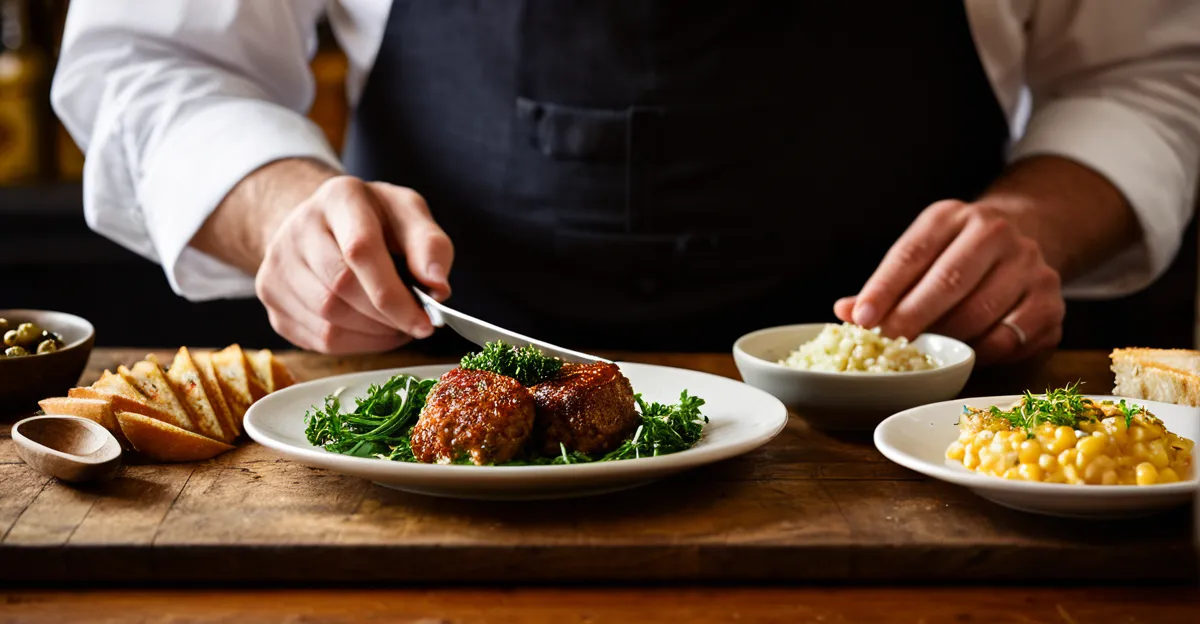Core Flavor Profiles in Traditional UK Cuisine
Traditional UK cuisine flavors revolve around savory and hearty notes that create a satisfying and comforting eating experience. British food taste profiles often highlight subtle sweetness and gentle spice without overwhelming the palate. These classic British flavors are typically balanced carefully, combining robust ingredients with more delicate tastes to achieve harmony in each dish.
One defining aspect of traditional British flavor profiles is the understated use of heat and acidity. Unlike some global cuisines that emphasize bold spices or sharp sour notes, British cooking prefers mild seasoning that enhances the natural flavors of ingredients. This subtlety allows the taste of fresh produce, meats, and herbs to shine without masking them.
Topic to read : What Unique Ingredients Can Transform Traditional UK Dishes?
Balancing these robust and gentle elements gives rise to flavor profiles that are both familiar and nuanced. For example, the sweetness found in roasted root vegetables or caramelized onions complements the savory richness of gravies and roasted meats. Meanwhile, a hint of gentle spice—often from black pepper or mustard—adds warmth without dominating the dish. These core flavor features form the backbone of many beloved British classics enjoyed across the country.
Essential Ingredients and Seasoning Methods
Traditional British ingredients play a crucial role in shaping the characteristic taste of traditional UK cuisine flavors. Classic UK seasonings often rely on a selection of herbs and aromatics such as thyme, rosemary, parsley, mint, and bay leaf, which gently infuse dishes without overpowering the palate. These herbs complement the British food taste profiles by adding subtle depth and an earthy freshness that aligns with the understated elegance of classic British flavors.
This might interest you : What are the secrets to creating a delicious steak and kidney pie?
Signature condiments like English mustard, horseradish, and malt vinegar are indispensable in British culinary techniques. They provide that gentle spice and mild acidity often present in traditional British cooking, perfectly balancing the savory and hearty elements in many dishes. For example, English mustard adds a sharp but restrained heat, while malt vinegar contributes a tangy brightness that enlivens fried or roasted foods without overwhelming the subtle sweetness inherent in root vegetables and dairy-based sauces.
Dairy products, root vegetables, and grains serve as essential flavor carriers in British recipes. Cream, butter, and cheeses enrich dishes with a smooth, mellow taste that supports the robust ingredients. Similarly, root vegetables like carrots, parsnips, and turnips bring natural sweetness and earthiness, anchoring the classic British flavors. Grains, including oats and barley, while less dominant, contribute texture and subtle nuttiness, enhancing the overall harmony of traditional UK cuisine flavors. These ingredient choices and seasoning methods underline the balanced approach that defines British food taste profiles, combining hearty richness with delicate, well-measured accents.
Representative Dishes and Their Distinctive Flavors
Traditional UK cuisine flavors come alive vividly in iconic UK dishes, each showcasing unique combinations of classic British flavors. A quintessential example is the roast dinner, where roasted meats such as beef, lamb, or chicken harmonize with naturally sweet root vegetables like carrots and parsnips. These are complemented by rich, savory gravies that enhance the overall hearty experience. The interplay of robust meatiness and subtle vegetable sweetness creates a balanced flavor profile that is both comforting and satisfying.
Pies and stews further exemplify British food taste profiles through their melding of slow-cooked meats and earthy vegetables soaked in hearty broths. These dishes rely on the patient development of flavors, where gentle spices and classic UK seasonings slowly infuse the ingredients. The result is a tender, deeply savory meal that reflects the understated use of heat and acidity, allowing the fundamental tastes of the components to shine.
Regional British specialties highlight the diverse expressions of traditional UK cuisine flavors across the country. Dishes such as Cornish pasties pack savory fillings encased in flaky pastry, while Welsh rarebit offers a creamy, cheesy toast infused with mustard’s gentle spice. Scottish haggis presents a unique combination of robust, earthy, and slightly spicy elements, and Yorkshire pudding is prized for its crisp exterior and soft, airy texture, often served alongside meat and gravy. These regional dishes enhance an understanding of the distinctive and unique UK food flavors that define Britain’s culinary heritage.
Regional and Historical Influences
Traditional UK cuisine flavors are deeply shaped by regional UK cuisine variations, reflecting the country’s diverse geography and its impact on local ingredients and flavor traditions. Coastal areas, for example, feature abundant seafood with milder seasoning to highlight freshness, while inland regions emphasize hearty meats and root vegetables, aligning with classic British flavors characterized by earthiness and warmth. This diversity enriches the British culinary heritage by ensuring that each region contributes unique tastes while maintaining the subtle balance of savory and gentle spice.
Understanding the historical UK flavors provides insight into how seasoning practices evolved from medieval times to the present. Early British recipes favored herbs such as thyme, rosemary, and bay leaf, which remain basic yet essential in classic UK seasonings today. The restrained use of spices, once imported and costly, established the tradition of understatement in heat and acidity that defines modern British food taste profiles. Over centuries, this evolution has refined the balance between robust and delicate tastes, layering regional differences within a shared culinary framework.
Enduring culinary traditions persist throughout northern, southern, and Celtic regions, each adding distinctive touches to traditional UK cuisine flavors. Northern areas tend to include more salted and smoked elements, reflecting preservation methods suited to harsher climates. Southern British dishes often showcase fresher herbs and lighter sauces, while Celtic regions incorporate unique local ingredients, preserving ancestral recipes that emphasize earthy, hearty notes. These influences collectively sustain the rich tapestry of British culinary heritage, marking the interplay of geography and history as central to understanding unique UK food flavors.








